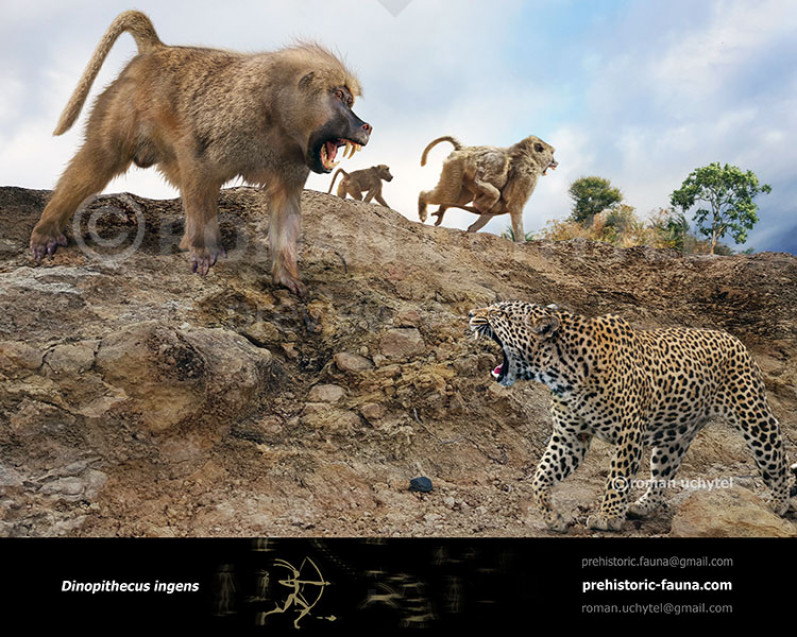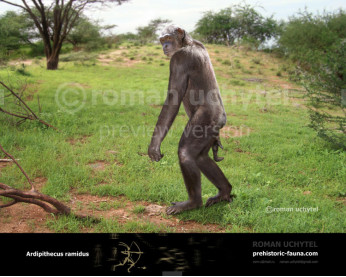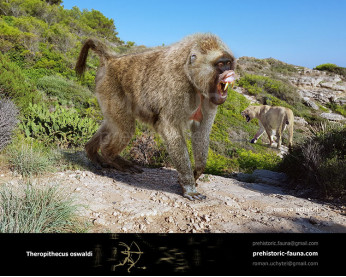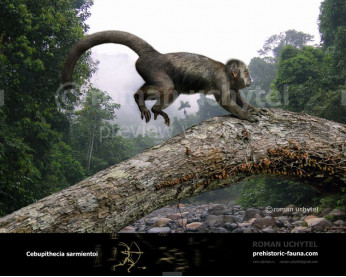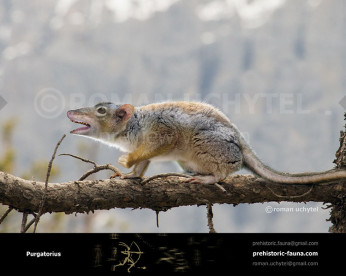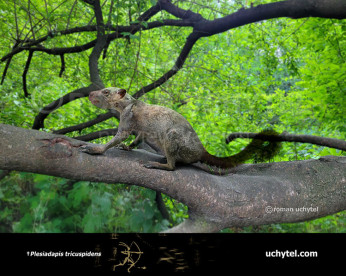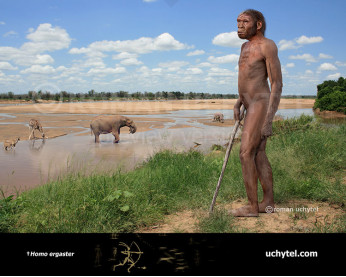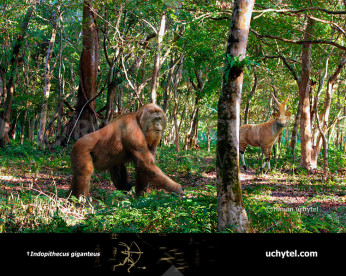Dinopithecus (Terrible giant baboon)
529529
Dinopithecus (†Dinopithecus (Broom, 1937))
Order: Primates
Family: Cercopithecidae
Tribe: Papionini
Dimensions: height - 120 сm, weight - 30-77 kg
Temporal range: the during the Pliocene to the Pleistocene epoch of South Africa
A typical representative: †Dinopithecus ingens
Dinopithecus ingens was approximately twice the size of the largest living baboons, with males averaging 46 kg and females 29 kg, based on estimates from the molar teeth. In some cases males were estimated to reach in maturity a weight of 77 kg. The most distinguishing feature of the genus is its large size in comparison to other papionins. The only other papionin species to attain a similar size were Theropithecus brumpti and Theropithecus oswaldi. These, however, are very different from Dinopithecus in their dental morphology. Overall, the skull is similar to that of modern baboons, except that it generally lacks the facial fossae (depressions on the sides of the muzzle and lower jaw) . For these reasons, Dinopithecus is sometimes treated as a subgenus of Papio.
An analysis of the carbon isotopes from samples of its tooth enamel found Dinopithecus to consume the smallest portion of grass and other savanna-based foods of any South African primate. Analysis of the microwear patterns on the molar teeth showed that they were similar to those of the living yellow baboon (Papio cynocephalus), suggesting a broad and eclectic diet.
As a papionin of very large size, it most probably spent a significant amount of time on the ground and moved quadrupedally.
Оплата
У Вас є кілька зручних способів купівлі зображення: кредитна чи дебетова картка Visa, Mastercard, Maestro; PayPal або банківський переказ
Dinopithecus (†Dinopithecus (Broom, 1937))
Order: Primates
Family: Cercopithecidae
Tribe: Papionini
Dimensions: height - 120 сm, weight - 30-77 kg
Temporal range: the during the Pliocene to the Pleistocene epoch of South Africa
A typical representative: †Dinopithecus ingens
Dinopithecus ingens was approximately twice the size of the largest living baboons, with males averaging 46 kg and females 29 kg, based on estimates from the molar teeth. In some cases males were estimated to reach in maturity a weight of 77 kg. The most distinguishing feature of the genus is its large size in comparison to other papionins. The only other papionin species to attain a similar size were Theropithecus brumpti and Theropithecus oswaldi. These, however, are very different from Dinopithecus in their dental morphology. Overall, the skull is similar to that of modern baboons, except that it generally lacks the facial fossae (depressions on the sides of the muzzle and lower jaw) . For these reasons, Dinopithecus is sometimes treated as a subgenus of Papio.
An analysis of the carbon isotopes from samples of its tooth enamel found Dinopithecus to consume the smallest portion of grass and other savanna-based foods of any South African primate. Analysis of the microwear patterns on the molar teeth showed that they were similar to those of the living yellow baboon (Papio cynocephalus), suggesting a broad and eclectic diet.
As a papionin of very large size, it most probably spent a significant amount of time on the ground and moved quadrupedally.

